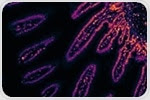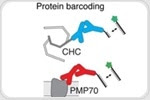| |
 E-FRET microscopy recently became a very popular intensity-based Fluorescence Resonance Energy Transfer (FRET) method for cell quantification. This technique reduces the photobleaching observed during the process of FRET. E-FRET microscopy recently became a very popular intensity-based Fluorescence Resonance Energy Transfer (FRET) method for cell quantification. This technique reduces the photobleaching observed during the process of FRET. | |
|
| |
 Fluorescence quenching is a physicochemical process that lowers the intensity of emitted light from fluorescent molecules. When a molecule absorbs light, electrons in its constituent atoms become excited and are promoted to a higher energy level. When electrons in this excited state lose energy and return to the ground state, they release this energy in the form of heat or radiation. Fluorescence quenching is a physicochemical process that lowers the intensity of emitted light from fluorescent molecules. When a molecule absorbs light, electrons in its constituent atoms become excited and are promoted to a higher energy level. When electrons in this excited state lose energy and return to the ground state, they release this energy in the form of heat or radiation. | |
|
| |
 Working with mice, a team of Johns Hopkins Medicine researchers has developed a relatively inexpensive, portable mini microscope that could improve scientists' ability to image the effects of cancer, stroke, Alzheimer's disease and other conditions in the brains of living and active mice over time. Working with mice, a team of Johns Hopkins Medicine researchers has developed a relatively inexpensive, portable mini microscope that could improve scientists' ability to image the effects of cancer, stroke, Alzheimer's disease and other conditions in the brains of living and active mice over time. | |
|
| |
 In day-to-day life, blinking lights can be used for sending signals––for instance, that a car is about to turn. At present, tiny “blinkers” that show single molecules of RNA or protein within cells based on the duration and frequency of every flash have been devised by scientists. In day-to-day life, blinking lights can be used for sending signals––for instance, that a car is about to turn. At present, tiny “blinkers” that show single molecules of RNA or protein within cells based on the duration and frequency of every flash have been devised by scientists. | |







No hay comentarios:
Publicar un comentario